Today, such a disease as osteochondrosis of the thoracic and cervical spine is considered a fairly common disease among people of different ages.
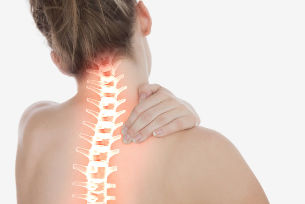
A sedentary lifestyle, poor posture and uncomfortable shoes can lead to a rather serious disease, which is almost impossible to diagnose in the early stages.
Characteristics of osteochondrosis of the thoracic spine
Osteochondrosis of the thoracic spine, more often called thoracic chondrosis, is a disease of the intervertebral discs of the thoracic spine. Additionally, thoracic degenerative disc disease is called a "chameleon", as the symptoms are not detected immediately and can be mistaken for a completely different disease.
Most often, the disease occurs due to metabolic disorders and excessive stress on the intervertebral discs. Thoracic chondrosis disrupts the normal functioning of the intervertebral disc.
Unlike other types, thoracic osteochondrosis is less pronounced and has the following symptoms:
- Chest pain,worsening at night, as well as with tight bends or hypothermia.
- Pain between the shoulder bladeswith a sharp lifting of the limb or tight bends.
- Sharp pain when sighingand chest tightness.
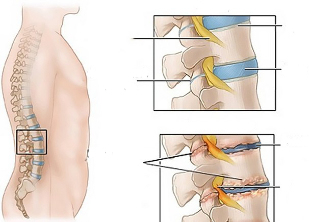
The above symptoms refer to the initial stage of the disease.
With a prolonged course without medical intervention, the following symptoms may appear:
- Numbness in small areas of the skin.
- Itching or burning in the legs.
- Severe peeling of the skin.
- Mild pain in the throat or esophagus.
- Poor gastrointestinal function.
Osteochondrosis of the cervical spine
Osteochondrosis of the cervical spine or cervical chondrosis is a disease that weakens the intervertebral discs, leading to a change in the structure of the discs themselves and cervical joints. Nerve endings can become inflamed, being compressed by destructive intervertebral discs.
According to the international classification of diseases (ICD-10), it has the code M42. 02.
The following pain sensations are inherent in the disease:
- Periodic headaches.
- Periodic painful pain in the neck, back, shoulders.
- Short-term visual impairment.
- Decreased sensitivity of the collar area.
Symptoms of cervical chondrosis

The second degree is characterized by the appearance of small spinal hernias and the following symptoms:
- Pain in the cervical spine, severe crunching when turning the head sharply.
- Periodic loss of sensation in the arms and shoulders.
- Visual impairment and recurrent ringing in the ears, sleep disturbances.
- Numbness of the face and neck, weakening of the upper limbs.
- Periodic acute pain in the shoulder blades.
The third stage of cervical osteochondrosis is difficult to treat. Intervertebral hernia increases in size, there is a deformation of the spine.
For the third stage, the following symptoms will appear:
- Severe pain in the neck and heart.
- Loss of sensation on the scalp, arms, shoulders.
- Paralysis of the upper limbs.
- Hernia of the cervical vertebrae.
The fourth stage is characterized by an exacerbation of all the above symptoms.
Symptoms of cervicothoracic osteochondrosis
A fairly common disease that immediately affects the cervical and thoracic regions. It can start at any age due to back injuries, sedentary lifestyle, and being overweight. An important role is played by hereditary factors and work in dangerous production (excessive vibrations).
According to ICD-10, this type of osteochondrosis has an M 42. 02 code.
Symptoms of cervico-thoracic osteochondrosis include:
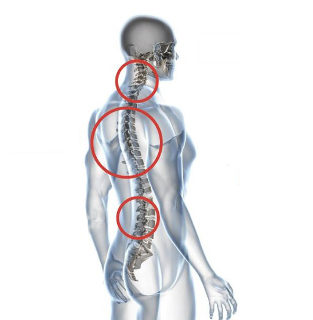
- Sudden dizziness.
- Aching pains in the neck and shoulders.
- Pain in the right hypochondrium.
- Drop in blood pressure and tachycardia.
Osteochondrosis with radicular syndrome
The disease got its name due to the disruption of normal functioning in the roots of the intervertebral nerves.
When the roots are affected, a variety of rather disordered symptoms develop, including severe "shooting" pains in the lumbar region and neck.
Symptoms also include:
- Short-term loss of the ability to perform any movement.
- Loss of sensation in the limbs.
- Muscle hypotrophy.
- Changes in neurological reflexes (found on examination by a neurologist).
The following factors are associated with the onset of root syndrome:
- Irregular load on the spine during overweight, pregnancy, uncomfortable shoes.
- Asymmetry of the lower limbs, flat feet.
- Injuries, acute loads on the spine.
If the disease is detected at an early stage, surgery is not required.
Causes of cervical osteochondrosis
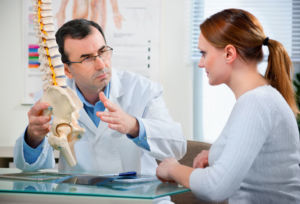
The main reasons for the development of osteochondrosis:
- Heavy and sedentary work, sedentary lifestyle.
- Previous spinal injuries and spinal curvature.
- Stress and nervous tension.
- Lack of physical fitness.
- Lack of healthy nutrition.
Degrees of osteochondrosis of the thoracic and cervical regions
In the development of cervical osteochondrosis, the following degrees of disease are characteristic:
- For the first stagechanges in the intervertebral discs are characteristic. Changes begin to occur due to the disappearance of fluid reserves from the nucleus of the intervertebral discs. The pain is not yet evident.
- In the second stagethe intervertebral discs become flatter. As a result, there are strong loads on the ligaments and muscles, which, due to the constant heavy load, begin to become numb. Constant dizziness is characteristic.
- The third stageis characterized by significant changes in bone and cartilage tissues, the appearance of arthrosis.
- Stage IVis characterized by the appearance of bony growths on the vertebrae.
Diagnostics
To diagnose osteochondrosis, the first step is to conduct a comprehensive examination of the spine. Signs of osteochondrosis in the initial stage can be confused with a number of other diseases. It is necessary to carry out diagnostics by a highly qualified specialist.
To diagnose the disease, it is necessary to contact the attending physician, who will refer to a specialist with a narrower profile. The sooner a patient seeks medical attention, the faster and safer the treatment will be.
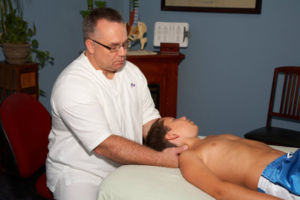
In fact, osteochondrosis is not treated by one specialist, but by several:
- Radiologist.After receiving the X-ray results, the picture of the disease will be clearer.
- Chiropractor. Determine the exact location and stage of the disease.
- The doctor is an osteopath.The treatment method is very similar to manual therapy.
- Doctor - neuropathologist.Osteochondrosis is closely related to diseases of the nervous system. The doctor will help in the treatment of the disease, both in the first stage and in the second.
- Doctor - physiotherapist.He is a specialist in physiotherapy exercises. Physical education helps only in the early stages of the disease.
A strong exacerbation of the disease is considered quite common. In such cases, you should immediately consult a neurologist. Osteochondrosis of both cervical, thoracic and lumbar regions is closely associated with nerve disease. The neurologist will prescribe a course of taking special drugs that relieve pain.
Osteochondrosis during pregnancy and lactation in women
Osteochondrosis during pregnancy is a common phenomenon, since during pregnancy a woman undergoes a global restructuring and a very strong load on the whole body. The disease on the fetus has no effect, but during childbirth it can cause a number of serious problems.
And it is also recommended to observe the period of breastfeeding by a doctor and to wear corrective corsets to reduce tension in the spine.
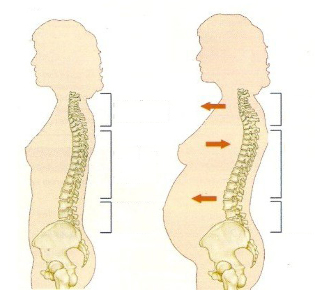
The reasons for the onset of osteochondrosis during pregnancy include:
- Weight gain and severe stress on the spine and wearing uncomfortable shoes.
- Pressure of the uterus on adjacent organs.
- Changes in hormone levels.
- Deficiency of useful vitamins and minerals.
- Lack of rest and sleep, various types of stress.
To prevent the disease, it is necessary to consult a doctor at the first signs of ailment. You shouldn't wait for the pregnancy to end. After giving birth, the disease can progress and it will be much more difficult to cure it.
If an ailment is detected, the pregnant woman will be assigned an antenatal bandage, a course of vitamins and minerals, as well as special gymnastics.
First aid for exacerbation of osteochondrosis at home
The duration of the exacerbation depends on the type and degree of neglect of the disease. Most often, an exacerbation can last from 1 week to 1 month.
Attention! In case of exacerbation of the disease, it is forbidden: to warm up in a bath or any other warm-up, massage and self-medication.
In the event of an acute attack, before the arrival of the doctors, it is necessary to do the following: If a visit to a specialist in the near future is impossible, it is necessary to resort to the following actions: Dorsagois the name of one of the symptoms of inflammation of the thoracic spine. The dorsago is characterized by severe pain in the heart region, most often it occurs in people who perform monotonous work sitting or after a long stay in an uncomfortable position. With sudden movements, short-term breathing difficulties are possible. Dorsalgiais a painful syndrome that occurs with a severe exacerbation of the disease, lasting about 2 weeks. With back pain, the pain gradually increases. The pain is particularly intense when you lean forward or breathe deeply. Most often, pulling pains occur in the area of the shoulder blades, lumbar region. In case of disease, various methods of treating osteochondrosis are used. The most common are considered: To relieve pain in the spine, most often, doctors prescribe drugs. At an advanced stage, drugs relieve pain for a short time. Therefore, to relieve pain and further inflammation, doctors prescribe NSAIDs in the form of tablets or capsules. Condoprotectors- another type of drug prescribed for osteochondrosis. Preparations are designed to protect and strengthen bone and cartilage tissue from destruction. With a strong inflammatory process occurring in the muscle tissue, the patient will be prescribed drugs to relieve muscle spasms. The dosage should be determined by the attending physician. The course of taking drugs does not exceed 3 weeks. In addition, one of the effective methods of drug treatment is the use of injections that can relieve pain. In case of complex treatment, the patient may be prescribed the use of special braces and fixing bandages. Exercises for osteochondrosis Prescribed exercises in a physiotherapy room can not only relieve pain, but also strengthen the muscles of the spine, further preventing the development of various complications. And even after several cycles of physiotherapy exercises, posture has improved considerably. The well-known doctor Bubnovsky has developed a set of exercises for the treatment of osteochondrosis, which can be used at home. The most common exercises are: In case of cervical osteochondrosis, it is forbidden to turn the head, since it is possible to provoke a complication of the disease. Physiotherapy is primarily aimed at reducing pain in the spine. The procedure improves blood circulation, enriches the muscles with oxygen. Today, the most common physiotherapy procedures are: In the complex treatment of the disease, some doctors also recommend the use of folk remedies to eliminate the disease. In complex treatment, it is especially important to observe the correct dosage and method of treatment. Folk remedies for home use relieve pain in the area of the muscles and joints, also restore joint mobility: This technique is quite common in the treatment of the disease. Valentin Ivanovich Dikul, first of all, tested his method on himself. Dikul's technique is indicated for diseases of the spine and intervertebral hernias. The following principles must be observed during exercise: In case of complex treatment, a special diet should be observed, which includes: The diet assumes an exception: To prevent the development of the disease, or to stop its development, the following prophylaxis should be used: With the correct observance of all the above recommendations, as well as with timely referral to specialists, almost any disease can be cured. Treatment of osteochondrosis takes much more time and money, but advanced disease can lead to a wheelchair.Dorsago and back pain
Methods for the treatment of cervical and thoracic osteochondrosis
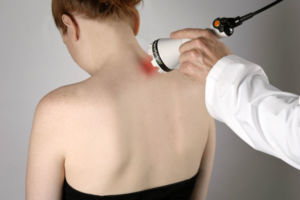
Medication
Correction means
Physiotherapeutic treatments
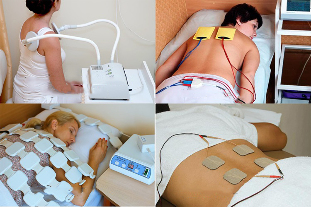
Treatment of osteochondrosis with folk remedies
Method of treatment of osteochondrosis according to Valentin Dikul
Principles of nutrition for osteochondrosis

Preventive measures
Conclusion




































